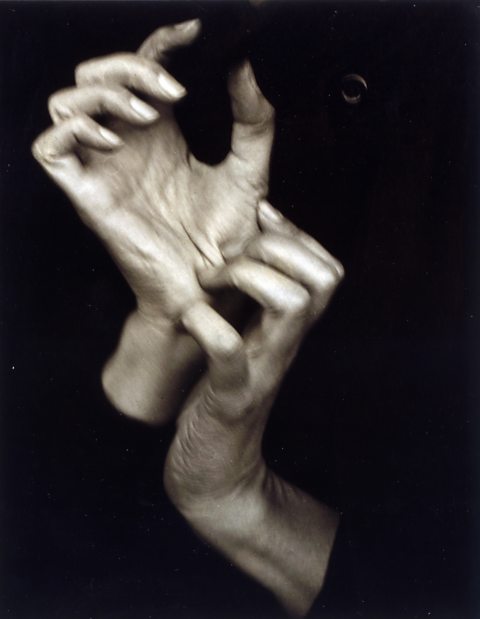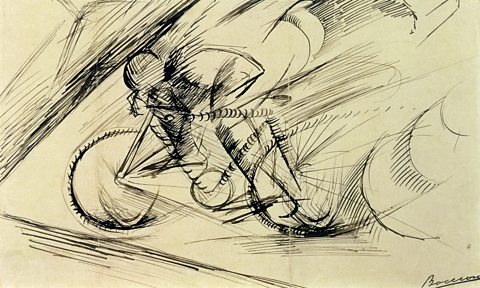Blurring
Rather than capturing a frozen moment, some artists and designers will use techniques to suggest movement over a period of time.
In photography, this can be achieved through the use of a long exposure.

In Alfred StieglitzÔÇÖs photograph of his wife Georgio OÔÇÖKeefeÔÇÖs hands (1918) the blurring of the image against a black background draws our attention.
Blurring shows the movement of the hands as one scratches into the other in a way that a frozen image would not.
The sense of movement adds to the unsettling feel of the image.


This image of the night sky has been taken with a very long exposure. The position of the stars has changed significantly during the exposure time.
The resulting image transforms stars from bright spots to curves of light that reflect the turn of the earth. This gives a sense of energy to what we would ordinarily see as a static scene.

Umberto Boccioni's Dynamism of a Cyclist (1913) shows how the use of line can imply movement on a static canvas.
This time the medium is pencil, but again the artist has used broken, curved lines to imply movement of the bicycle and the scene.
This is particularly clear in the unfinished circles of the bike wheels and the blurred legs which suggest they are moving quickly on the pedals.
This sketch is an example of FuturismA social and artistic movement that began in Italy in the early 20th century. It focused on technology, speed and symbols of modern life including aeroplanes and cities. - an art movement from the early 20th century with a great interest in the movement and speed of modern life and technology.